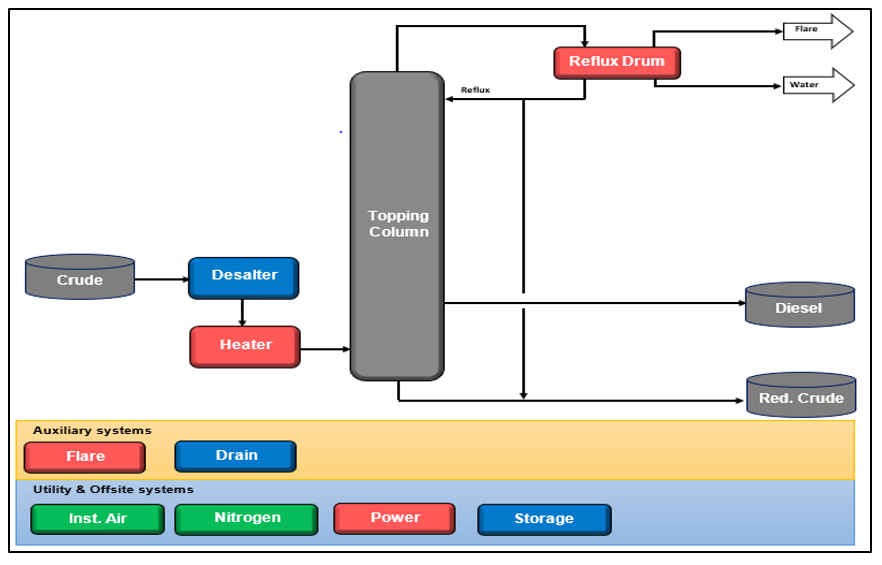Field Diesel Units are effective in areas where there is a ready supply of Crude Oil but limited supply of diesel or fuel oil, such as remote oil fields or drilling locations. A Field Diesel Unit can fulfill fuel requirements for power generation and drilling operation. This unit extracts the Diesel component from the Crude Oil and then blends rest of the products back to Crude Oil stream. The Field Diesel Unit is supplied in easily transportable skids; it is quick to install and self-sufficient. The unit can be started when needed and stopped when the tanks are full. The Diesel produced by these units largely depends on the type of Crude Oil, the lighter varieties will provide greater diesel yield and higher cetane number.
Standard Sizes
- 200 BPD Crude Oil throughput
- 500 BPD
- 1000 BPD
Major Units
- Desalter
- Fired Heater / Hot Oil Heater
- Distillation Column
- Diesel Stripper Column
- Heat Exchangers
- Chemical Injection System

Process
Preheating and Desalting
Crude Oil from storage tank is pumped through preheat exchangers to an electrostatic desalter using fresh water, which is preheated and mixed with crude oil. The desalted crude is further heated in exchangers with hot product streams before it enters the heater.
Heating
The preheated crude oil from desalter is then charged to the heater which is fired by off-gas or one of the product streams. Crude Oil enters the heater convection section, passes through the radiant section and exits the heater at suitable temperature for fractionation.
Distillation
The heated Crude oil from the heater is flashed into Vapor and Liquid fractions in the flash zone of the distillation Column. The vapor fraction rises through wash zone fractionating trays of the column, whereas liquid fraction flows down to bottom through stripping section. At pre-determined operating temperatures, diesel fraction in the vapour condenses and flows back into liquid phase and is drawn as product from the chimney trays under level control into a diesel stripper. The lighter fractions go up and condense in overhead air-cooled Condenser. Part of condensate is fed back as reflux and the balance is blended with the residue from the Column bottom and mixed with the Crude Oil. The uncondensed gases are vented to Flare system.



